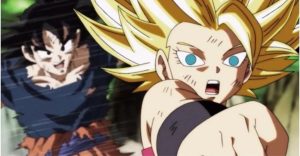Haikyuu!!: 10 Ways The Sports Anime Gets Volleyball Right

Anime has a tendency to positively exaggerate whatever topic it covers, and sports anime are no exception. The volleyball anime Haikyuu!! focuses on what it feels like to be a dedicated volleyball player both on and off the court. It also goes over specific details of the game and the thought processes and coordination required for a team to operate effectively.
Haikyuu!! is mostly about the Karasuno High Boys Volleyball Club and Shoyo Hinata’s journey to becoming the new “Tiny Giant,” but the show also covers volleyball tournaments and the other teams in the prefecture like Aoba Johsai, Date Tech, Nekoma, Fukurōdani, and Shiratorizawa. Within all of these teams there are different playing styles, team strategies, and dynamics that are relevant to volleyball and teamwork. No matter what the differences are amongst the teams in the show, they play by the same proper volleyball rules.
10 Player Positions

There are six players on the court for each team and 12 substitutions allowed throughout the game. The player positions are a part of the strategic planning that goes into volleyball because, typically, players have a special set of skills for each position. The court positions also rotate, so players have to be considerate of each others’ skill set to assist as they are removed from their specialty location.
The five positions Haikyuu!! focuses on are Setter, Left and Right-Wing Spikers, Middle Blocker, and Libero. Fans also recognize these by the characters that specialize in them: Kageyama, Tanaka and Hinata, Hinata and Tsukkishima, and Nishinoya. The sixth position is typically fulfilled by Daichi as the Defensive Specialist or more recently Tadashi as the Pinch Server. Defensive specialists help assist, typically in the back row, but sometimes all over the court, to keep the ball in play. Pinch Server is a specialty label players can get when excel at a specific skill, like Tadashi’s floating serve.
9 Sportsmanship

While each league, team, and tournament’s sportsmanship practices are different within every sport, Haikyuu!! covers the sportsmanship practice of volleyball with the captain handshake at the beginning, and the “good game” or “thank you” sentiment at the end. Haikyuu!! also includes the Japanese practice of bowing to the other team and the teams shaking hands to thank them for the game.
8 Court Rotation

In the same vein as player positions, the court rotation is also an accurate representation of volleyball. As the game progresses, players move over into the next position in a clockwise pattern.
This change happens after the team that has been scoring is prevented from scoring again. If the team that wins the point is the serving team then no rotation is required.
7 Communication

Communication amongst players on the court is vital to success in any game, especially volleyball. Letting fellow players know when the ball is in someone’s range or possession allows less room for collisions and mistakes. Often in Haikyuu!!, fans will hear them call “mine,” or “got it” because these are quick and efficient ways of making sure too many people don’t go for the same ball.
Encouraging words are also a major part of the communication on the court. When the rest of the team on the sidelines and the fellow players on the court know their teammate is about to make a move, they cheer them on. Haikyuu!! does a great job of depicting this.
6 Warm-Ups & Practice

Volleyball games can sometimes run for a fairly long time depending on the abilities of the teams playing. But, practice is where players gain a better understanding of themselves and how they play the game.
The warm-ups and practices fans see Karasuno players doing are a key part of volleyball. The running, spiking, setting, and serving drills help attune muscle memory and point tactics.
5 Scoring

The team that reaches 25 points first wins the match in volleyball. Haikyuu!! plays in 3-set matches; the first team to win two sets can either move on in the tournament or is the winner for that 1v1 game. The game can also come to a deuce where both teams have reached 24 points and whichever team wins by 2 points, wins the match.
4 Setter Dump

Something rookie volleyball players are always focused on is how to receive the ball and the basics of volleying, serving, and spiking skills. If there is enough training time before the first game, players can learn about things like a “setter dump.” This is where the setter, rather than passing it to their spiker, tips the ball over the net.
This is a good method when blockers have predicted the spike and receivers have backed them up so the floor behind the opposing team is open and too far for someone, like the libero, to save it.
3 Substitutions

The team on the court can’t play every tournament or match the whole time, so the players on the bench can be substituted in. In volleyball, they use number signs and an official crossing over the sideline. You can also only sub in once, which is why Tadashi felt the pressure for his serves to be good.
Haikyuu!! highlights this aspect of the sport when they highlight players like Suga and Tadashi who aren’t always in the starting lineup but they have special skills to be subbed in for.
2 Serves

Also known as a “service,” serves are the moves that start the game. It can be used to make points like the players talk about in Haikyuu!!, but often, it is also just to get the ball in the air and in play. Serves that are aimed for points get just outside the boundaries more often than fans think, so, sometimes, just getting the ball in the boundaries, as Tadashi does, can be key to getting the point from a server.
Oikawa’s serving ritual of two bounces and a spin or two is something fans can spot in many sports. In basketball and volleyball, there is a calm before a free throw or a serve, and Oikawa’s serve always starts with the same pattern to get his mind in the game. It also doesn’t always work but the mindset of the ritual is what matters to the player and that rings true in reality, as well.
1 Special Moves

While a joust is not technically anyone’s special move, it is something players cannot always plan for on the court. A joust is when the blockers on both sides or the blockers on one side match up with the spiker on the other, and it is a test of strength, as they hold the ball between them with just their palms and the tips of their fingers. It really comes down to who can push it through the other’s hands first.
Another special move fans, as well as Nishinoya, love is the “Rolling Thunder.” It is a special libero move, and Erik Shoji, libero for the United States Men’s National Volleyball Team, has said that he even does the rolling thunder in real life… though he doesn’t announce the name of the move in real-time.
About The Author

















